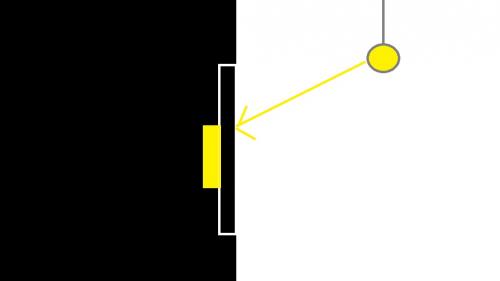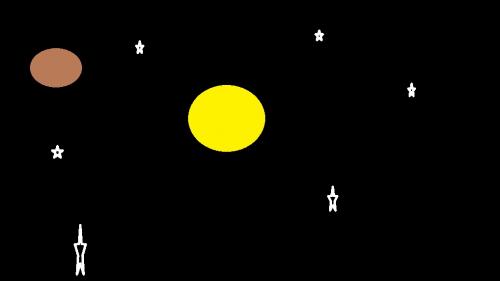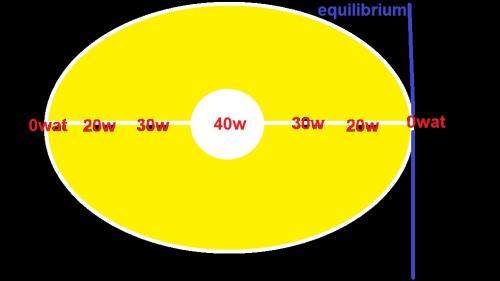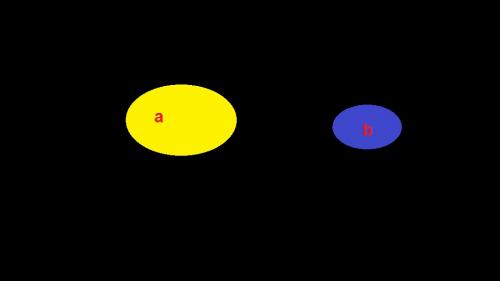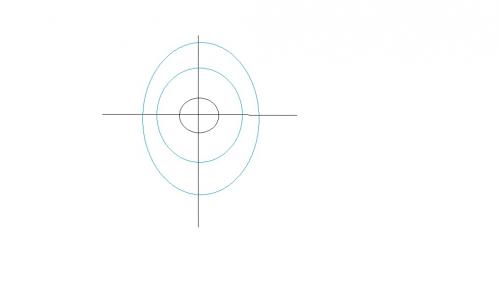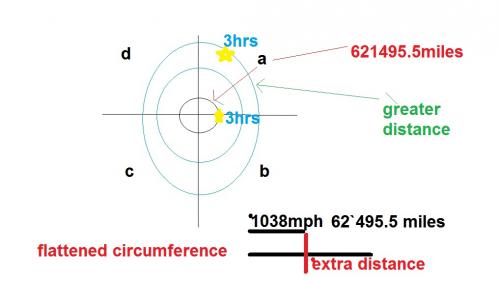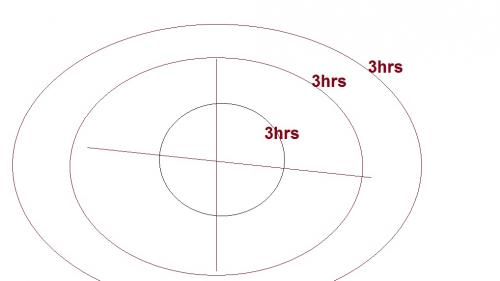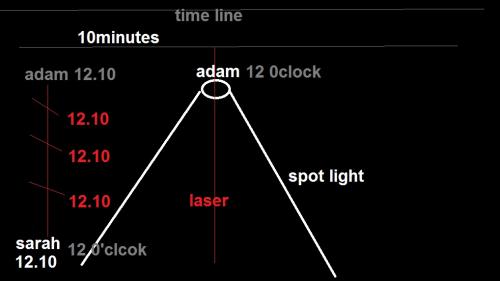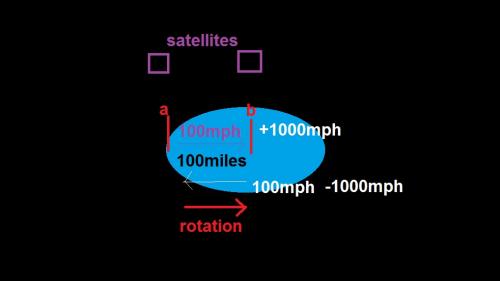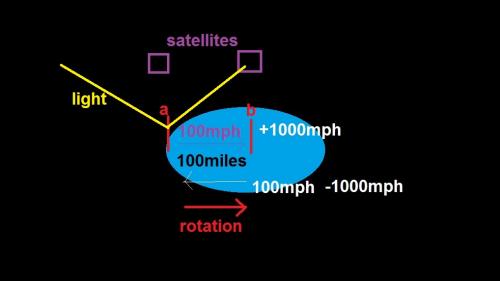

Relative
Senior Members-
Posts
685 -
Joined
-
Last visited
Content Type
Profiles
Forums
Events
Everything posted by Relative
-
Its only light when you add light, that is what I said. And I know dark is the absence of light, but all the same, dark is always there without light, regardless whether you add or don't add light , dark is still there, but illuminated when adding energy. Light is made, darkness is not, darkness is natural, light is not . And the test was to show that by volume of darkness compared to the energy trying to escape the window, that the energy trying to escape is jailed by the volume of darkness. And C , is slowed down dramatically. Hence a near perfect reflection at night in glass. Any way I better not go off track, my post will end up getting closed sorry. In a pitch black room we can not see because we have added no radiant energy? In a pitch black room we can not see because darkness is a different frequency to the frequencies we see at?
-
A test for you maybe? dark outside, light shining through a window, another light in a box on the outside shining inside, look at the reflection difference of objects in the lit room? May be nothing...but thought I would share. Well I am just asking about my thoughts, they are not an assumption, but simple logic based thought . I can't agree at the present that's all, until my own thought about it has been dissuaded with some talk of why not etc. Did dark come first before light? If we take away light , dark is always there? Dark never leaves? It is always dark? Dark only becomes light by adding saturated forms of radiation? Remove the energy we do not see? Dark becomes energised? Colour does not exist, we only see light at different saturation levels? We see at the speed of the light?
-
Brightness is too much frequency to what we see at Good question, and an answer I am yet unsure of. I believe dark to be a negative, or near negative in energy. I believe dark to be the volume, I believe the entire universe is dark, and we only see because of evolution, and adjustment to see the different radiation frequencies. And through those frequencies. I believe dark always ''exists'', and only process makes light, energising the dark. I think dark is like a static conductor, a conduit for energy. I also think volume of dark compared to ''light'' , has a part to play, because of reflections in glass at night is stronger. The dark seemingly holds the light back allowing a more intense reflection. Thank you and I understand, but to learn, is to question. If I see it differently, I need to ask about it. Please never take my posts for saying this is how it is, I am always only asking.
-
I thank you Strange for your continued patience. And indeed I am trying to learn to the best of my abilities. I understand light ''suppose'' to follow the inverse square law, and I understand what you are saying when you refer to dark has the absent of light and not been a thing. I knew this from countless forums. However, I still can not agree that , that is correct. Dark is not the absent of light, I do not see this, in fact I see mostly opposites or different to everything science says!. Light, is made, it is a property , a function of energy, if there were no red dwarfs,energy etc, the universe would be in complete darkness?, darkness was there first?, so how can darkness not be a ''thing'', when darkness proceeds light?. Also you refer to light has light, were has I consider light is not light has such. I consider light is created, not has a thing, but has something we see through, transparent. An energy that evolution allowed us to adjust too, to see,see through? Darkness is the lack of frequency we need to see at?
-
Our perspective view is this When actually it is this. ????????? The background of blackness in space is where light has red shifted so bad, we can not see any further? Any stars etc would be lost to visual narrowing of perspective view? And finally for today on questions, Is this how it works?
-
Thank you Strange, your patience is admirable. ''The (average) distance from the Earth to the Sun is called an Astronomical Unit (AU). 1 AU = 92 955 807.3 miles = 149 597 871 km'' This is a concept I am struggling to grasp, how can something be measured without having two points to measure to and from? With no background in space, how do you get your sizes of planets etc, I understand you must use some sort of scaling of planets, but i have a problem with the perception. In this example I look at the Sun from observation point on the Earth. In this example how do we know,define, is this Sun small and close, or is this Sun huge and far? Or is this sun small and far and within a darkness realm, stands out like a sore thumb? And it is always dark and never light? Dark proceeds light always? Darkness is negative/low energy compared to when light? Dark becomes energised by EMR? I remove all the energy from the Universe, you would see this? We all would be technically blind? And I think I know why my posts are confusing, all my posts I talk about future science, science ahead of our current thought. My thoughts have not yet materialised into the science world. But if any of you do understand me, your eyes will be opened also. I will stick to questioning of the Physics. And through questions hopefully will give you some new food for thought. From a different perspective , I am going to add energy to the Universe and take a box section of the Universe. We are in a central position inside the box section in this example, white representing light that fills all of space and only by obstruction is there a lack of light ,shadows.. We can see through the light in this instant? The light is transparent? We evolved to see through the EMR, our eyes adjusted to the radiation frequencies? My white box has blended into the page, making my box seemingly infinite. I expand our light box section, to see source. We see the source because it has more energy than the surrounding area? A different energy ''viscosity'' to space? Our body cells age because of radiation decay? A bit like becoming a dried prune. A cluster of electrolytes in the body would be more thermodynamically higher of receiving radiation than single electrolytes? and how is the speed of light measured?
-
Ok thank you, so where did we derive 12 months in a year from?, has you are saying months came before the clock, which seems a little backwards, This should be easy for you guys to explain. Point A and Point B is all that exists, what do we use to measure the distance? How do we measure distance on a solar scale? The Sun is approx 92957130mi away Earth's circumference 24,859.82 miles 92957130/2485982=6017.9411883approx So the sun is equal to 6017 times around the earth away from us? approximately? The Sun changes size to the Earth observer, depending on time of year?
-
I will try asking a question I have probably never asked, How was time on a clock ,of 24 hours, derived?
-
Scratching my head because I know you are smart!. Time comes first correct?, without time, there is no speed or distance? In history what was the order ? 1st time 2nd distance 3rd speed? ''Because it is equal to distance divided by speed.'' which is 0.277 mile equivalent to 1 second? or is there some other point to point we use to measure distance? Distance is equal to divided by time?
-
This is because no one has spotted this Strange before, time is and was derived this way, making time equal to distance there is no other explanation of why else the maths all fits and how distance was derived also? 2394.97302505/86400= 0.02771959519 mile It all fits , you can reverse the maths and it still fits, I cant see past this, You need to do better than just say time is not distance?, when I can clearly see that it is! and it works for other planets..... A clock is 360 degrees, a clock represents one rotation, expand the clock, we have different time, it all fits? Big bang expansion is time ? And where do they get there timing from? I understand the context in which you represent time, and it is not what I am on about. Science has age and everything related, according to time, by rotation timing? Do you know this has in my diagram below? Or Am I trying to explain something you already know which I have got confused about? I do apologise to the forum, my learning style is curious and to question what I am learning. I have to have 100% facts to except that knowledge. I thank you, and to move on I have to understand before I can move on, I do not like to leave out any details in learning. And up to date, there is lots of subject matter I can question, science is incredible and opens the mind to thought.
-
I have Earth's equator circumference at 24,859.82 miles? Earth's rotation 1038 MPH? 1 revolution 24 hrs? 24 hrs at 86400 seconds? Is that all correct? 24 hours equal to 360 degrees rotation? 24,859.82/1038 = 2394.97302505 hours? 1 day
- 202 replies
-
-1
-
I had to look up the word, are you saying I only outline my questions and miss parts out I should be asking? Or what I have learnt is only the outlines?
-
HUH? I have just learnt from forums and the internet, I am self taught, so you can see the confusion at times from myself. There is a lot of info, to take on board, one life time is not enough.
-
I am not arguing, I am asking why the maths fits, what is my calculation mistake?
-
The assumption that time is based on distance, proceeds the maths, I did the maths to get the presumption, because the maths fitted.
-
here we dont go again, I am trying to find out why I do not understand, you say maths , I do the maths and my answers are the same as my thoughts, using your circumferences etc, so why does the maths add up?
-
Thank you , I have a lot of reading to do with the provided links, I am still scratching my head. I thank you and will re-read all the replies before any more questions. I still think there is something wrong, I am unsure what , but either way for some reason my penny is not dropping, or something is wrong. If we was referring to time dilation has gravity dilation, then I would get it.......there seems so much contradictory in science. I do know by my own logic, it could be a case of my little understanding, and something I am just not getting. I will scratch my head and sleep on it. After reading the links I am more confused, I do not want to come across has arrogant or suffering Dunning and Kruger effect, But can no one see the simple logic, I will quote form the links - ''Einstein first figured out that time moves at a different rate depending on how fast you're moving, and depending on how close you are to a gravitational field. And scientists have already shown that time moves faster at higher elevations — clocks on a rocket move slower than clocks on Earth, for instance. By this logic, astronauts are actually time travelers.'' I think I am just going cry . Honestly time on a clock is an invention and not time. ''Einstein first figured out that time moves at a different rate depending on how fast you're moving'' Time on the clock changes yes, but time does not change surely? Our Earth time is based on rotation!. If you are in a car and travel at 100 mph starting at 12 o'clock A rival travels at 100 mph starting at 12 o'clock No change in the clocks correct? Clock Time stays the same for both observers ? I add altitude to one observer, and leave the other on the ground, the 100 miles at altitude takes less time because of circumference difference? less time meaning the clock runs quicker? If I wanted to land on the moon this is how I do it? The clock runs slower at altitude? Time is based on distance? I got a feeling I could make some maths .... Times started with one rotation been 24 hrs? The 24 hrs, were then used to create distance again subdivided? 24,901.55 miles Earth's circumference? Then it is easy to extend distance and work out the rest? Is this what relativity is?
-
If the relativity thinking is wrong, then so must be the rest. Earlier in my questions, a house brick up a mountain would weight less, so experiences less gravity the more altitude. ''Near the earth's surface clocks run about a part in 1016 faster for every meter above sea level. The equation for the fractional frequency change is gh/c2 The timing difference would depend on the altitude and the duration of the flight.'' How would this compare to the gravity difference? At altitude the Caesium clock would run faster because of less gravity surely? ''The timing difference would depend on the altitude'' and gravity is different depending on altitude? Has anyone took a Caesium clock up a mountain and left it static to try that compared to sea level?
-
Ok, I do understand what Einstein was saying, but it is still 1 d thought and still changing the rules of the physics involved. Natural light, is constant to all observers unless obstructed, we all see light at the same time, since when does light, return to the Sun? I just can not see how this works. Its bending the laws of Physical process surely?
-
I am not trying to write it off has a mechanical defect, the whole concept is just so incorrect, using 1 dimension thought, and a man made laser, change the laser to a light bulb, or change the spaceship for a Sun, all observers see the light as in reality of the yellow drawing. I just do not get it, it does not work, a parlour trick. You can not change the angle that is cheating, you are not changing , slowing down anything, you are directionally aiming a laser. It is a gimmick. 1 dimensional thought?
-
I am referring to Hafele–Keating experiment? ''Your yellow diagram doesn't make much sense. The presence of light has nothing to do with time dilation.'' Light is used in special relativity to show the difference, using observers. referring to 3.10 minutes onwards in this link? replace Adam and Sarah with snowmen , and then lets see if time is different. A clock is an invention, how can this be remotely correct? Sarah the snow women who has the same mass as Adam the snow man, experiences greater gravity force? Adam is also travelling a greater circumference than Sarah?
-
Thank you , and what about the final questions with the yellow diagram and question comparing gravity with altitude? and sorry just cant understand this statement - ''Because there is a minimum energy that the electron can have. That minimum energy keeps it away from the proton.'' How can a energy difference stop opposites attracting? would there not just be less attraction? and quarks attract each other, how can two of the same join to make a proton?
-
Thank you for the education, Not a smaller Earth like the moon, more like a rewind through time, taking away the Earth's layers until we are left with just the core. I would understand gravity and all mass attracted to mass, if it were not for cores. I understand gas clouds and can see that been mass attracted to mass, but how , why, if, buts, do we have a liquid/fluid/none solid, center core? The core obviously comes before the outer layers of Earth, so how's that work then? ''They are attracted, but with a free electron and proton, there is nothing they can form so they can't join. A neutron has more mass that a proton+electron, so energy would not be conserved. When you solve the physics equations, the lowest energy state is that of a hydrogen atom. '' Rephrase - An atom that has an electron/electrons already attached to the Proton, the Electron shell, and the space between the Proton and electron presumably, why can the electron not touch the Proton? If opposites attract , example magnets which stick together, why does the opposite an electron not fix directly to a proton. The lower energy state atoms are the more buoyant atoms? Energy is attracted to energy, mass been energy ? I sink in water because of gravity? Water has a different viscosity/density to rock/ground/Earth, I can not sink by adding energy and momentum in the right direction? The atmosphere again is a different viscosity to water, if i could add more velocity to my movement and more energy I could fly? If I could run at 1000 mph , I would be weightless? I drive 100 miles directly East going with the Earth's rotation from point A to point B. At one hundred miles per hour. My rival drives from point B to point A, directly West going against the Earth's rotation. At the same mph. Both journeys take 1 hr. However from a stationary satellite, above point A and Point B, the satellites record two different times? Sorry I am just curious about this? This is to do with time dilation. Satellite B witnesses starter A , moving towards it at 1100mph? Satellite B witnesses starter B, moving 900mph away from it? satellite A , witnesses starter A , moving away at 1100mph? satellite A, witnesses starter B , moving away at 900mph? I already know, that both journeys no matter what between the set points will be conclusive and always one hour. We add light to the equation, has in time dilation theory, and look what happens, no time dilation, no change? I make Earth transparent, yellow represents light, all observers see light at the same time, no dilation? What in seconds was the result difference in the flight test of the Caesium clock, and how does this compare to the difference in the gravity at the altitude the aeroplane flew at compared to the gravity on the ground?.
-
Sorry im still not getting it. To simplify, we remove the Earth's layers down to the outer core, this would still hold together without any crust etc?
-
By centripetal force, I mean inwards force, gravity is centripetal to a central point of zero? So zero is like an isotropic centripetal plug hole ,except nothing goes down it, so there is a central void?

